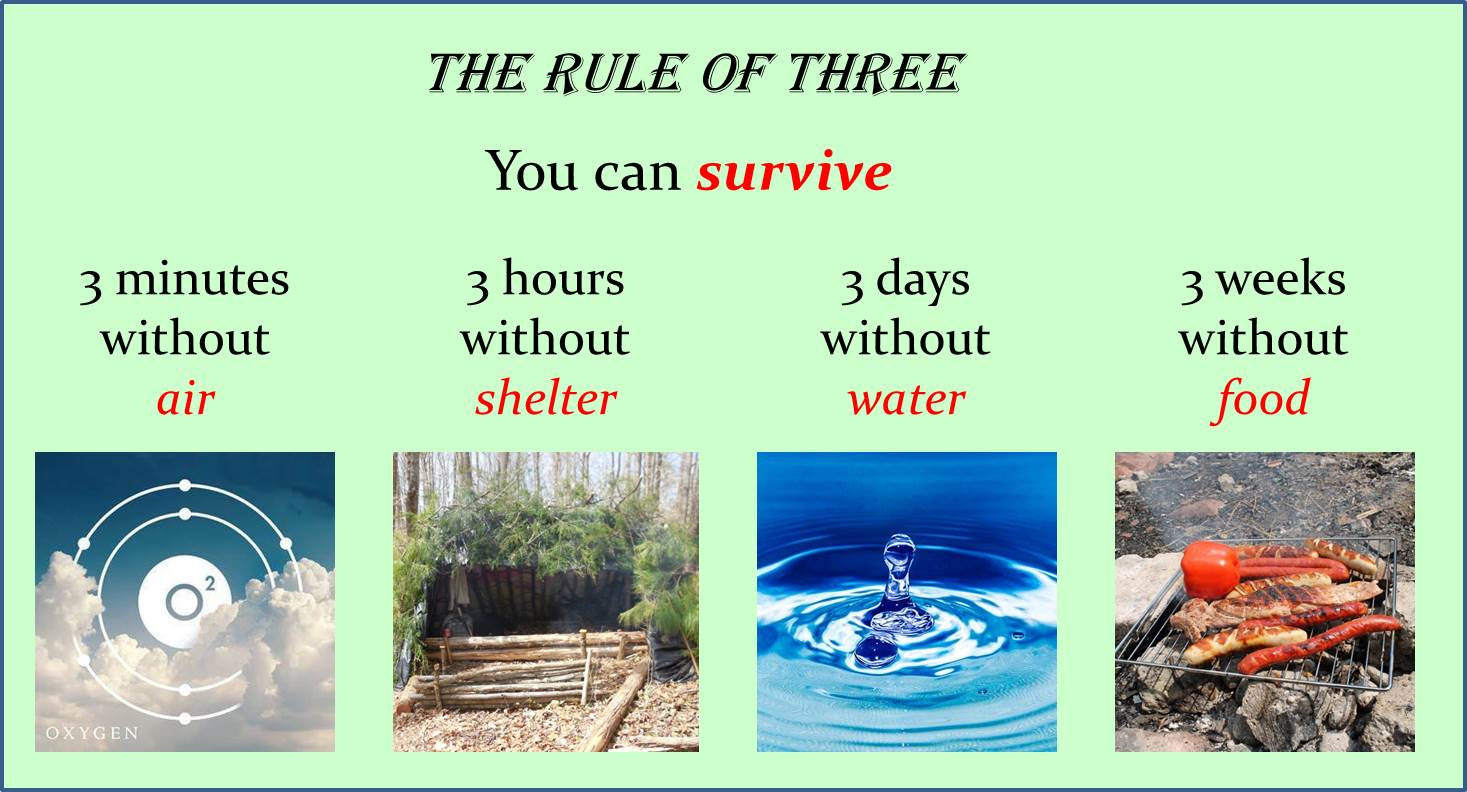The Hierarchy of Survival Actions Since everyone is currently focused on surviving the COVID-19 (e.g. coronavirus) pandemic we thought that this would be a good time to discuss the hierarchy of survival actions – as dictated by the “Rule of Three”. For those of you not familiar with the “Rule of Three” it states that you can survive for 3 minutes without air/oxygen or in icy water. You can survive for 3 hours without shelter in a harsh environment. You can survive for 3 days without water (if sheltered from a harsh environment). You can survive for 3 weeks without food (if you have water and shelter). So what does the “Rule of Three” really mean? Well it’s pretty straightforward in directing what you need to focus on and how quickly you need to focus on it. After all, if you can’t breathe - you don’t need shelter. If you get hypothermia from the rain, heatstroke from the sun, or freeze from the cold - you don’t need water. If you are incapacitated or die from dehydration – you don’t need food. And, if you have a shelter and water, then knowing that you have 3 weeks to either improve your wilderness living situation, find a way to trek back to civilization, or help rescuers locate you, should greatly improve your mental condition – while you hunt and gather food.
As a specific example of this survival hierarchy, if you watch the TV “survival” shows (e.g. Naked and Afraid, Alone, Man vs. Wild, Dual Survival, etc.,) you can see that there is often a great difference between the initial actions that the experts and the novices take when dropped into the wilderness. Many of the novices start by trying to build a fire – something that may be important – but can take a significant amount of time and effort – and can prove to be very frustrating; a bad emotion to encounter on your first day in a survival situation. In contrast, you’ll notice that the experts normally try to find a good site for their shelter (near water if possible, sheltered from the wind, away from any flood plain and safe from any “widow maker” trees). Once they have located a good site they immediately try to build the best shelter that they can in the available time that they have before nightfall; knowing that they can always improve their shelter on Day #2 if they survive Day #1. As they collect materials for their shelter they might simultaneously gather materials to make a fire, but the fire is of secondary importance (especially since having a shelter will allow them to more easily build, light and protect a fire and any firewood they gather). Only once they have a shelter do they begin to focus in earnest on their needs for fire, a longer term water supply and how to acquire food. Rather than write a very long blog that still only superficially covers the vast amount of detail required to really prepare you for a survival situation, here’s a listing of six books that you might want to own so that you have access to the knowledge that the survival experts have honed over the years:
For more information on survival, especially what you might want to do to prepare for a potential short term disaster, you should check out our website’s “Camping/Maps and Books” and “Disaster Preparedness” pages. But, whatever else you do, please remember the “Rule of Three” - since it could save your life.
0 Comments
Leave a Reply. |
What's On This Page?Here's where we post reviews, questions, answers, thoughts and other information that's of general interest to our followers in a blog format. Categories
All
Archives
August 2023
|
|
|
Copyright 2016-2024 Hiking, Camping and Shooting |


 RSS Feed
RSS Feed